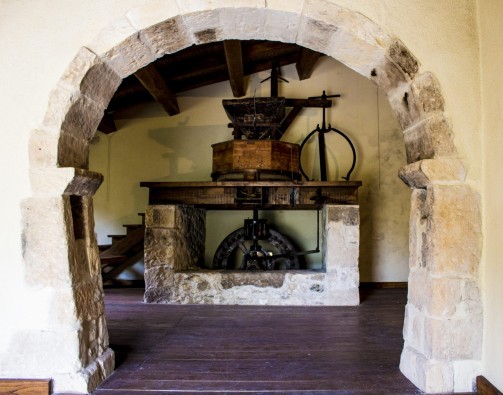The present-day settlement of San Lorenzo offers itself with a peculiar village all developed lengthwise along the main road, but in reality the layout of the houses was strongly influenced by the canals that conveyed water to the mills. Many houses are basically former mills. The limestone nature of the western slope, opposite that of volcanic origin, offers to the eye a quite peculiar cleft with sudden and important jumps in elevation. These are the elements that allow the water to flow with particular force so much so that it has always been harnessed for the movement of the wheels connected to the stone millstones. It cannot be ruled out that the exploitation of hydropower can be traced back to the Roman period; certainly it was of vital importance between the 13th and 14th centuries when the valley open to the sea represented the economic-industrial heart of the Malaspina seigniory, which boasted on the coast the exclusive use of a landing place to be located at the mouth of the Silis.
In 1847 Vittorio Angius counts more than 25 plants, while Canon Liperi-Tolu, referring to the 1911 census, informs us that for the 430 inhabitants residing in the village of San Lorenzo, many of them millers, there are as many as 36 fully functioning mills. It seems impressive to imagine the constant noise that accompanied this valley with the plants simultaneously in operation. Control over their operation was entrusted to the miller, whose first concern was to avoid damaging the stone wheels during the grinding phases-a danger that could also lead to the development of dangerous fires triggered by the rubbing of the discs. The decline of the St. Lawrence mills is quite recent and all encompassed in the post-World War II period with the advent of electric mills.









